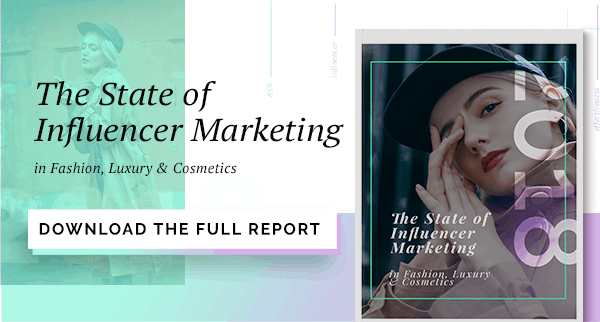For our 4th annual State of Influencer Marketing report we spoke with industry insider, Emma Gregson, the Managing Director at ITB Worldwide, an entertainment marketing, talent and partnerships agency. Not only did she offer us insights on what it takes to carry out a successful influencer marketing campaign, but she also gave her expert opinion on the future of this digital marketing practice in fashion, luxury and cosmetics.

Do you think influencer marketing will continue being as effective in the near future?
My belief is that influencer relationships will begin to deepen with brands in order to harness more integrated relationships that build advocacy. Peer to peer influencer marketing will certainly grow and the platforms coming to the market to enable micro-influencers to engage directly with brands will facilitate this even further.
How can a micro-influencer help a brand?
Micro influencers provide a peer to peer voice and allow a brand to really target a segmented audience. They are trusted and turned-to voices amongst their communities and so can be powerful spokespersons if they choose to talk about a brand.
What are the benefits of working with the same influencer throughout several campaigns?
It shows the consumer there is longevity to a relationship, which builds both authenticity and advocacy – the influencer truly enjoys the partnership and sees the benefit of it, as well as truly championing the product.
How has influencer marketing changed in the past few years?
People of influence have always been part of marketing strategies – it’s simply the verticals and silos from where they come from (as opposed to the common place popular/celebrity culture) and the platforms with which the message is communicated has changed. In more recent commonly-known digital influencer campaigns, we’ve seen a shift to more integrated partnerships rather than just one-off posts.
Measurement is still a challenge for fashion brands. What do you think is the problem?
The direct engagement driven from influencer campaigns is hard to quantify unless product codes/tracking links are used which can be a clunky mechanic.
Should fashion brands invest more in influencer marketing?
Influencer marketing for fashion brands has the power to shift brand perception, target new consumer groups, change their fashion conversation, and provide engaging content for their consumers. It’s absolutely a channel that should be explored and invested in.
Are influencers paid fairly?
I think there are enough data tools out there for an influencer to be able to justify their ROI so that has certainly benefited them. For some of the larger influencers you also need to take into account a broader PR appeal which makes it a little more subjective, but on the whole, yes.
What do you look for in an influencer?
Engagement and connection to their own audience. The ability to translate a brand’s aesthetic into their own style whilst understanding what the brand needs to get out of the partnership.
What defines a great influencer marketing campaign?
Having personal relationships with the influencers you work with is key. That’s where some of the database and automated systems available don’t fully engage for me – you need to be able to have a blend of both data and human insight/relationships. Also, campaigns that really have a thought-out strategy behind them is key rather than a one-off post moment – it needs to build a story and exist on a time scale in order for a brand to weave it through their other campaign strategies – it shouldn’t stand independently but be an integral part of a brand’s communications.
Why do you think millennials are so attracted by the power of influencers?
They can decide who they choose to follow and engage with, it’s democratised the landscape. No longer are people told what to wear, but encouraged to explore their own style through inspiration of others.
For more insights and stats on the landscape of influencer marketing in fashion, luxury and cosmetics, download your free copy of the report here:

